| Early Spring Date: | March 1 |
| Late Spring Date: | May 30 |
| Best Dates to See in Spring: | March 1 - May 15 |
Spring: White-throated Sparrows are winter residents in the Washington metro area who breed in the northern United States and Canada. They are extremely common at Monticello Park, especially in most of April and the first week in May. In addition to the ones who winter in the park, others stop there while heading north to nest.
Fall: White-throated Sparrows begin to arrive at Montciello in early October. They can be seen in good numbers after the middle of the month.
Where to See Them in the Park
White-throated Sparrows spend a lot of time on the ground and low in bushes. You can see them in good numbers virtually anywhere in the park.
Physical Description
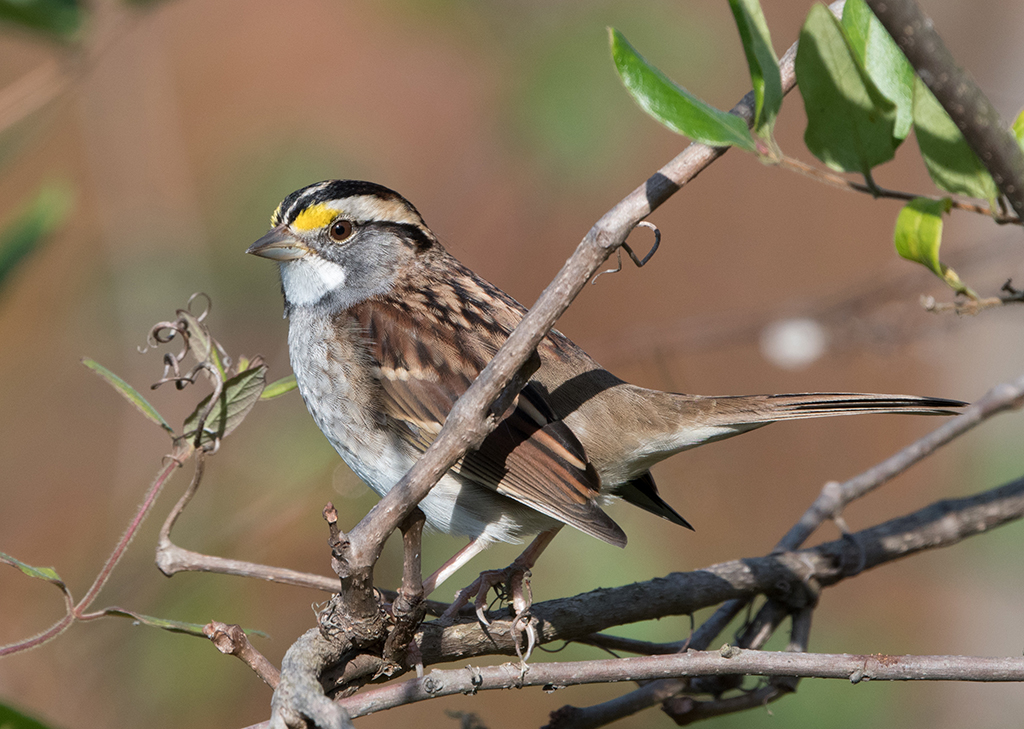
Many adult White-throated Sparrows are relatively easy to identify. They have a black-and-white striped crown. The face is gray, and the throat is white. The sexes look similar.
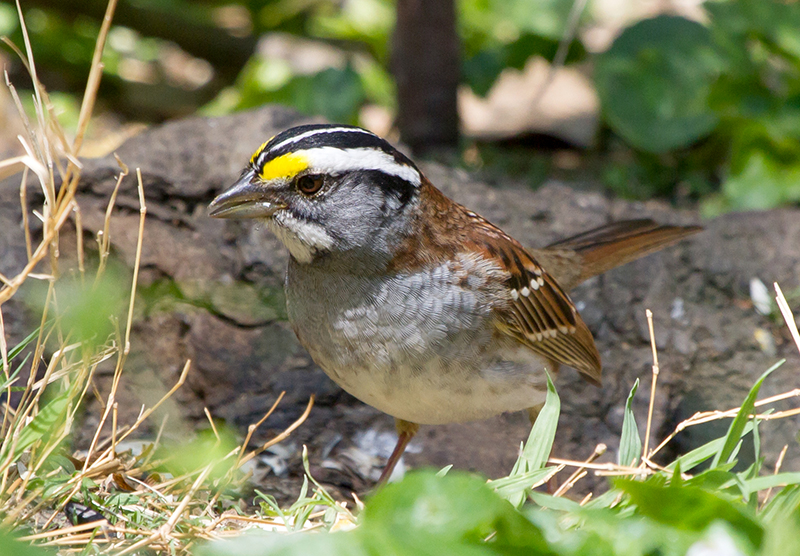
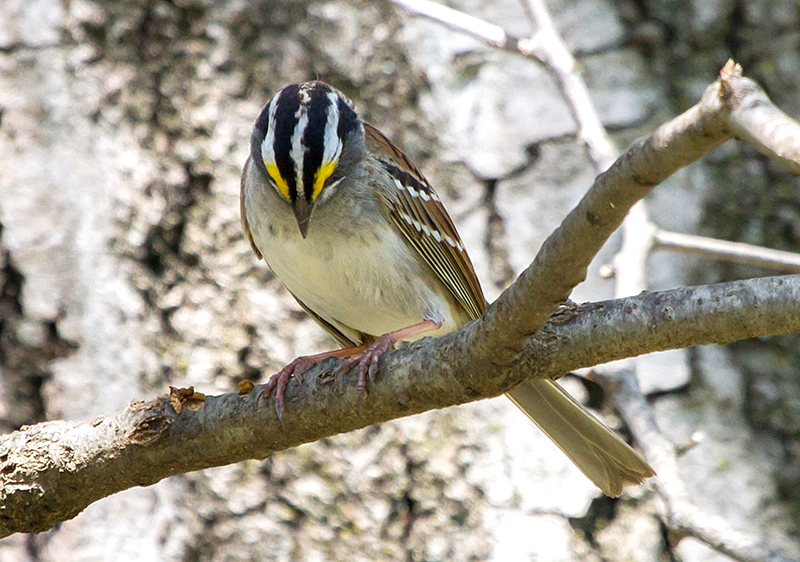
An important fieldmark is the yellow spot between the bill and the eye. The White-crowned Sparrow, a species rarely seen at Monticello Park, has a similar black-and-white crown, but it does not have a yellow spot near the bill, and the bill is a different color than the White-throated.
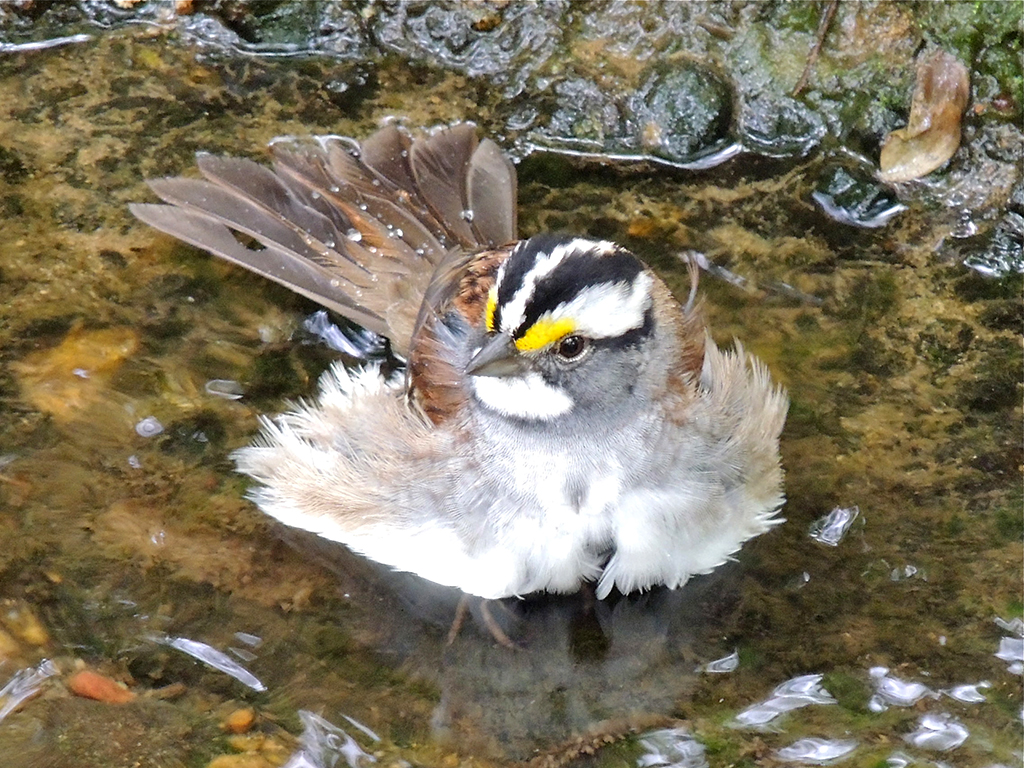
White-throated Sparrows often go into the stream to bathe.
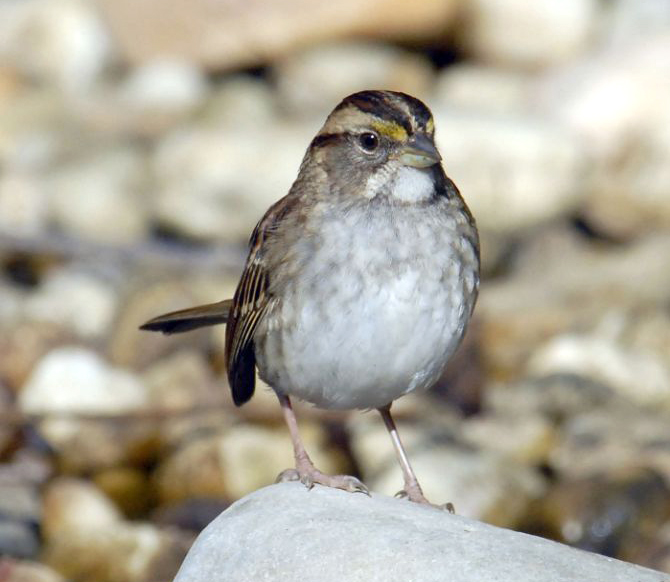
Some White-throated Sparrows have a tan-and-brown crown rather than a black-and-white one. Most White-throated Sparrows prefer to mate with a bird of the opposite color pattern. Because the markings on the head do not stand out as much on tan-and-brown sparrows, they can be more difficult to identify. The tan birds still have a white throat.
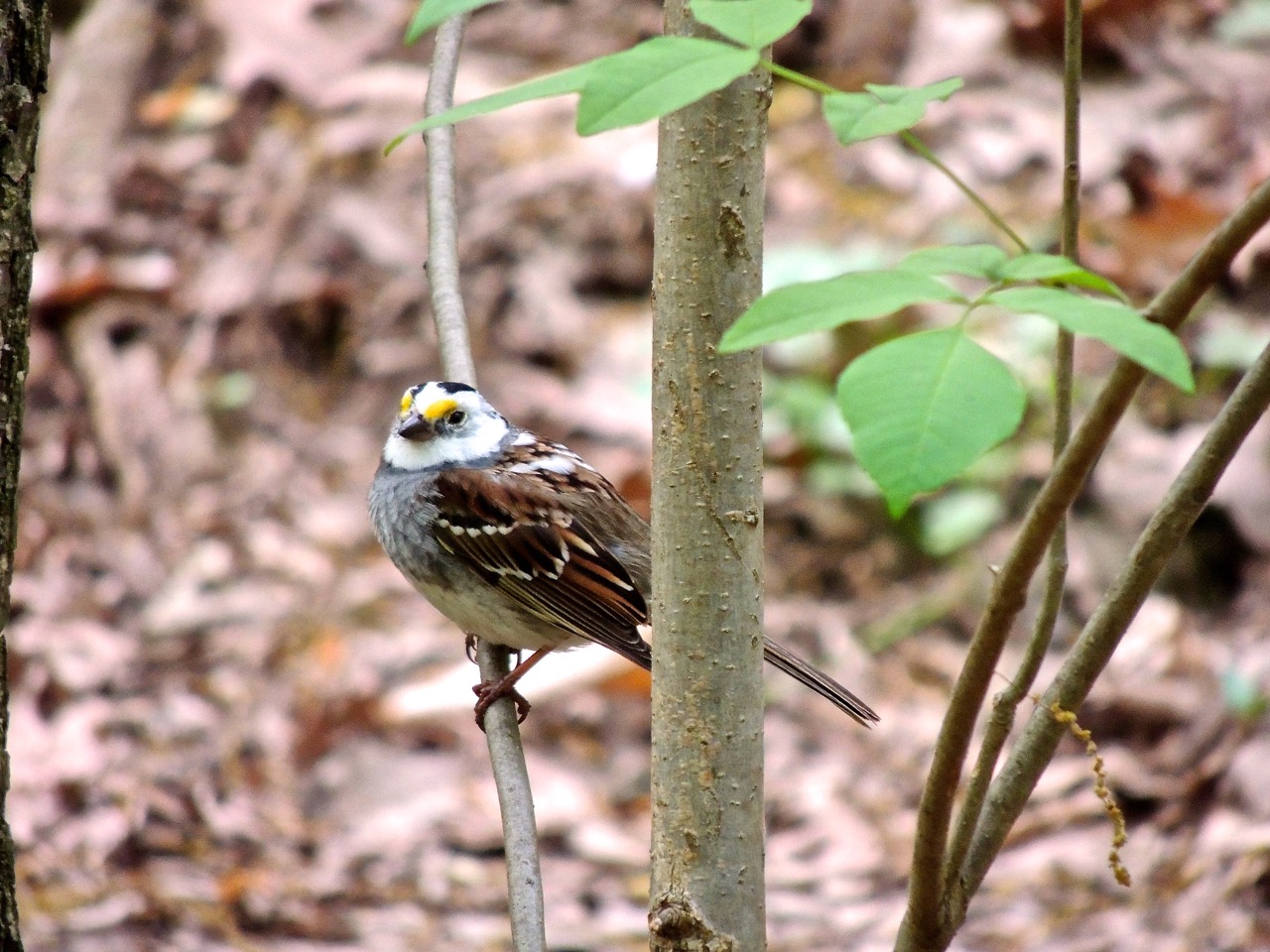
In 2019, a leucistic White-throated Sparrow visited Monticello Park. Leucism is a color abnormality which causes a loss of pigmentation, resulting in feathers that are either white or pale. Leucism can affect all or some feathers, and it is not the same as albinism, which is a total absence of pigment. Leucistic birds do not have red eyes, while albino birds do. The leucistic White-throated Sparrow had yellow markings near the eyes, but the black crown stripes stopped in the middle of its head rather than reaching all the way to the bill. Rather than having black and gray near the eye, the sparrow appeared to have a shadow of a mask.
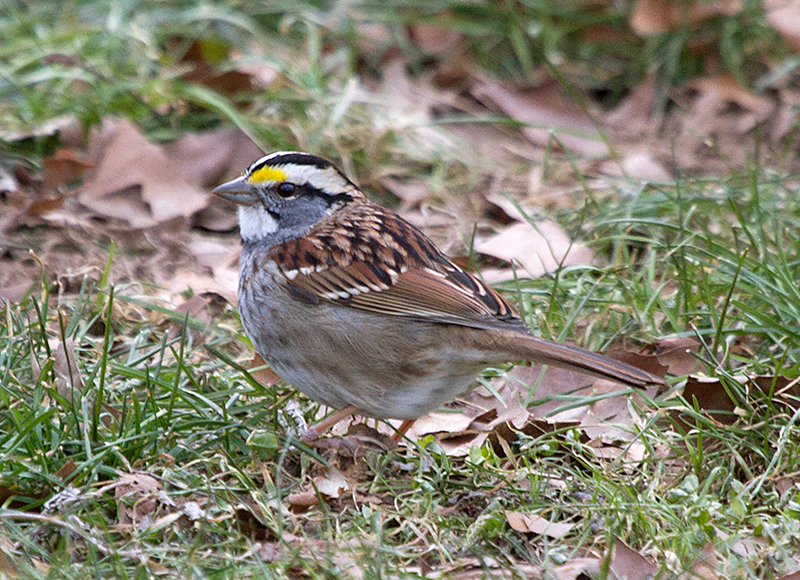
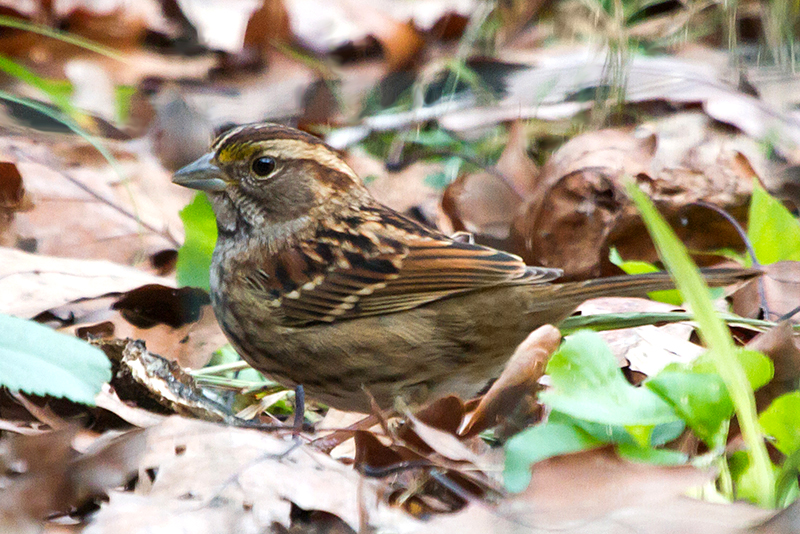
Fall: Immature White-throated Sparrows have more streaking on the breast than adults. They are usually first-fall or first-winter birds. As with the adults, some have and a black-and-white crown, and others have a tan-and-brown crown. As the winter turns into spring, you often see birds who have molted into brighter adult plumage with less streaking.
Vocalizations
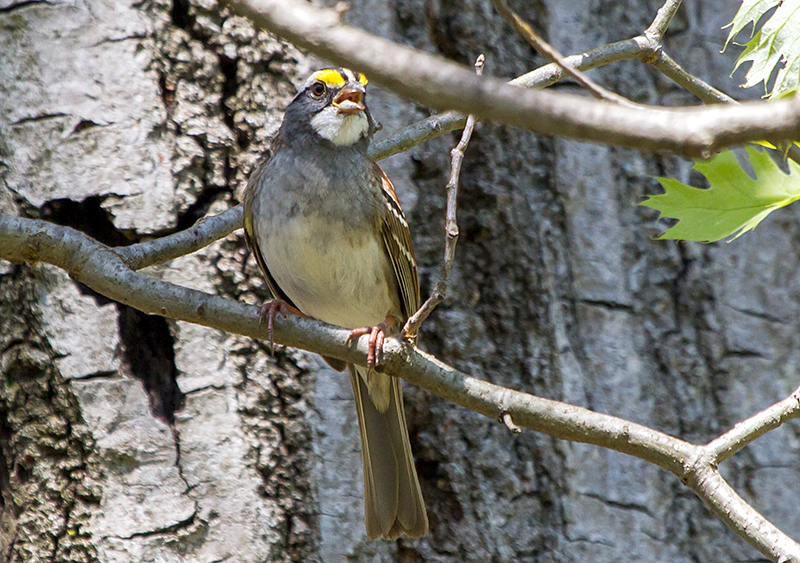
The song of the White-throated Sparrow has different mnemonics, depending upon which side of the US-Canada border you live. North of the border, Canadians think the bird is singing Oh Sweet Canada Canada Canada, while south of the border, people think the bird is singing Old Sam Peabody Peabody Peabody. The call consists of loud chips.
Hear the vocalizations of the White-throated Sparrow.Notes
The tan-and-brown birds are a color morph of the White-throated Sparrow. A morph is a variation that may occur within a species; members of the morph occupy the same habitat and engage in random mating with other members of the species. A morph is roughly the same as a phase. Morphs are different from races and subspecies, which involve differences within a species based on geographic separation, sexual selection, or other factors.
Origin of Names
Common Names: White-throated from the plumage. Sparrow from the Anglo-Saxon spearwa, which means flutterer.
Genus Name: Zonotrichia means banded thrush.
Species Name: Albicollis means white-necked.
White-throated Sparrow video footage
Return to the Index
